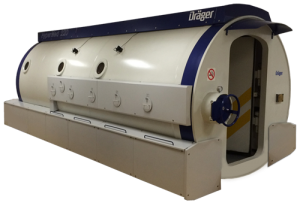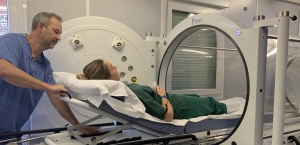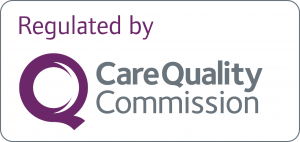Frequently Asked Questions
Below are the most frequently asked questions that we get asked. If you don’t find the answer you are looking for, feel free to get in touch with us.
1. Why chose LHM Healthcare?
LHM has been providing consultant-led clinical Hyperbaric Oxygen services to both the NHS and private patients in a hospital setting for over 25 years. We have an unblemished track record of providing safe and effective evidence-based treatments to many hundreds of patients and have unequalled experience in England in this specialist field of medicine.
Each centre employs a team of 9 qualified and highly experienced Hyperbaric physicians and a similar number of ICU-trained Hyperbaric nurses and technicians, offering round-the-clock cover for routine, urgent and emergency treatments.
LHM Healthcare is the only provider in London and the southeast to be recognised and commissioned by NHS-England as a centre of excellence for emergency and elective HBOT.
LHM’s chambers are located inside busy District General Hospitals offering direct access to all departments and services should the need arise.

25-years of clinical Excellence
2. Hyperbaric Oxygen Therapy / Treatment (HBOT)
Hyperbaric Oxygen Therapy (HBOT), as practiced in the NHS, is the treatment of a disease or medical condition by the inhalation of near-100% medical grade oxygen at pressures greater than 1.9 atmospheres absolute (ATA) in a pressure vessel (medical device) constructed for that purpose.
Scientifically supported hyperbaric treatments are usually delivered at pressures between 1.9 to 3.0 ATA conditions proven by peer-reviewed research and listed on the British Hyperbaric Association (BHA) and the US FDA websites:
Hyperbaric Medicine is a range of medical treatments that are delivered inside the safe, controlled, pressurised environment of a Hyperbaric Chamber.
3. What is a Hyperbaric Chamber?
The word ‘hyperbaric’ is derived from the Greek words ‘hyper’ (υπερ) for above normal and ‘baros’ (βάρος) for weight.
Commonly associated with divers, a Hyperbaric chamber is a pressure vessel used to treat a range of patients, including divers, suffering from various disorders such as decompression sickness, Air embolism, soft tissue radiation damage, non-healing wounds and more.
Once sealed, an operator can control the atmospheric pressure inside the chamber. This means the pressure conditions a diver experiences at varying depths in the water can be simulated.

Hyperbaric Therapy Chambers are also known as:
- diving chambers
- recompression chambers
- decompression chambers
- hyperbaric oxygen therapy chambers
Often these terms are used interchangeably. The names reflect the different purposes that the chambers are designed for, rather than their capability.
4. What types of Hyperbaric Chambers do we use?
Monoplace Chambers
Hyperbaric chambers that provide a safe, comfortable environment for the treatment of a single patient.

Multiplace Chambers
Hyperbaric chambers that are used when there are multiple patients, or when practitioners need to be present.

5. Why do we use Hyperbaric Oxygen?
The goal of hyperbaric oxygen therapy is to get more oxygen to tissues damaged by disease, injury or other factors. In a Hyperbaric Oxygen Therapy Chamber, the air pressure is increased 2 to 3 times higher than normal air pressure. The blood plasma can therefore carry much more oxygen than would be possible breathing pure oxygen at normal air pressure. This enhances the growth of new blood vessels and tissues as well as supporting the body’s immune system activity.
6. What is Mild HBOT and does it provide the same benefits as medical HBOT?
Mild HBOT is mainly offered by ‘Wellness clinics’ and often misrepresented as Hyperbaric Oxygen Therapy or HBOT. Mild HBOT commonly involves the use of protocols that have no basis in scientific evidence; ie low pressures (2ATA or lower), low non-medical quality Oxygen dosage (93% Oxygen) and short (60 mins) treatment sessions in the absence of appropriate medical supervision.
Hyperbaric oxygen is most effective at pressures of 2.4 ATA, breathing 100% medical grade Oxygen for 90-minute sessions, in accordance with recognised research and treatment protocols. Scientific evidence to support the clinical efficacy of Mild HBOT is severely lacking.
Hyperbaric Oxygen Therapy should not be confused with ‘Mild Hyperbaric Oxygen Therapy (Mild HBOT), which is an ineffective treatment for which there is no clinical evidence of effectiveness. This unsafe treatment is often offered by Wellness clinics and misrepresented as Hyperbaric Oxygen Therapy.
7. Which Conditions is Hyperbaric Oxygen Therapy used for?
Please visit our page of Conditons We Treat to view full details.
8. Why do I need an Assessment?
An initial assessment is a vital part of our work to determine if the therapy is appropriate for the condition being treated and to plan the treatment. It takes in to account your medical history, overall health and any medical devices you may have. The assessment will help to identify any contraindications, which protocol to use and the optimal number of sessions for the best possible outcome. You will also be informed of any side effects, risks and potential benefits of the therapy.
The assessment will be carried out in our facility by one of our Duty Hyperbaric physicians, with the backing of a multi-disciplinary team of experts who may be called upon in some circumstances.
9. How quickly can I access treatment?
Assessments can take place as soon as the patient’s medical history can be provided, usually within 24 hrs.
Our facility runs daily morning treatment sessions and it would be normal for a patient to be scheduled to start as soon as the assessment is completed, and travel or other organisational arrangements have been made.
10. Do I need a Referral?
Yes.
This can come from either your GP, consultant specialist or relevant healthcare professional. HBOT is normally considered to be an adjunctive treatment and it is important that our physicians are able to form a complete picture of your health, in relation to any other treatments you may be having. A formal referral enables our admin team to easily access your full medical background and to communicate with other healthcare professionals involved in your care.
Patients or healthcare professionals may call one of our centre during normal working hours and ask to speak directly with the duty doctor.
11. Who will be treating me?
The duty Hyperbaric physician will be present at your assessment and throughout your treatment, ready to help and provide advice or to intervene at any time.
Also present, will be an experience team including the Hyperbaric supervisor, the chamber operator and an In-chamber attendant / Hyperbaric nurse. The team is supported by on-site admin staff, who will be able to assist with organising your treatment and travel arrangements.
12. What is a Safety Briefing and why do I need one?
The safety briefing is normally carried out by the duty Hyperbaric supervisor before the start of the first session. It covers how to equalise your ears during pressurisation and how deal with any potential difficulties. It covers all aspects of your treatment, what to wear and how you will be looked after while undergoing therapy.
It gives you the opportunity to ask questions and seek reassurances from our friendly and experienced team.
A Patient Information Leaflet is also available at reception.
13. Why do I need to change into scrubs and not use my normal clothing?
Using a hyperbaric chamber exposes you to higher levels of Oxygen than would normally be the case in an unpressurised environment. This naturally results in an increased fire risk. LHM has a unmatched safety record due to the safety precautions we take to ensure the safety of each and every patient.
Wearing the 100% cotton scrubs provided by our staff, ensures that no contaminants or combustibles that could increase the fire hazard are taken into the chamber, thus keeping you, other patients and our staff safe.
14. How long will the treatment last?
Each treatment session lasts around 90 minutes. Please allow an hour for preparation before each treatment. The number of sessions you will be asked to attend will depend on several factors including which particular protocol is prescribed.




